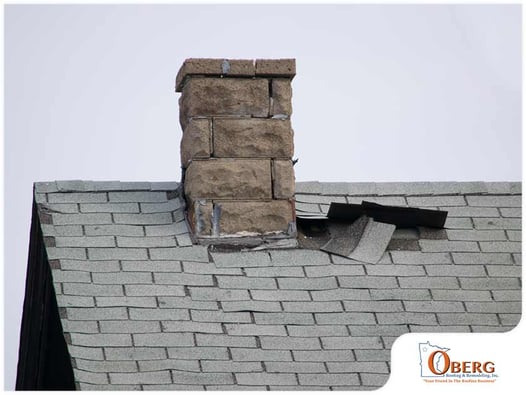Asphalt roof shingles are designed to protect the inside of your home from outside elements. However, your roof is constantly exposed to unpredictable extreme weather conditions, including severe windstorms. Strong, violent winds can cause sudden, devastating damage that may lead to leaks and compromise your roof’s structural integrity.

Oberg Roofing & Remodeling presents the factors that affect the susceptibility and wind resistance of your asphalt roof to wind damage.
How Does Wind Interact With Your Asphalt Roof?
Wind doesn’t move smoothly in a steady, constant direction. Instead, it moves randomly at various speeds as a reaction to temperature and pressure differences in the Earth’s atmosphere. It is also a result of the land’s terrain and topography.
In comparison, the interaction between the wind and your asphalt shingles is more predictable. When the wind hits the sides of your home, it travels up and goes over your roof with changing degrees of uplift pressure. Uplift pressure is the highest at the corners of the roofline, which are areas that are particularly vulnerable to wind damage. As wind moves across the roof surface, negative pressure is created, which may lift shingles off of the roof deck.
What Influences the Wind Resistance of Your Asphalt Roof?
Many factors influence how wind affects your asphalt roof. We list a few examples below:
- Roof location. If you live in a hurricane- or tornado-prone area, it’s likely your roof is more susceptible to wind damage because high winds occur more frequently in these places than those in the city.
- Roof geometry. High-pitched gable roofs with wide overhangs are more vulnerable to wind uplift. Aerodynamic, four-sided hip roofs, meanwhile, can withstand strong winds more.
- Roof condition. Old roofs have higher chances of being badly damaged by the wind due to cracked shingles or loose nails. If you think your roof is nearing the end of its service life, be sure to have it replaced as soon as possible.
- Installation flaws. Keep in mind that the nails attach the shingles to the roof deck. If shingles are improperly nailed, your roof has a higher chance of sustaining wind damage. Be sure that your contractor positions the nails correctly on the shingles. As a general rule, each nail should have a diameter of at least 3/8th of an inch.
Has your roof suffered wind damage? You can rely on our experienced team of roofers at Oberg Roofing & Remodeling to lessen the stress you’re feeling through our roof restoration services and friendly staff members who are genuinely concerned about your situation. Call us today at (320) 204-2264 (for St. Cloud residents) or (651) 369-1630 (for Roseville residents). You can also fill out our online contact form to set an appointment.

